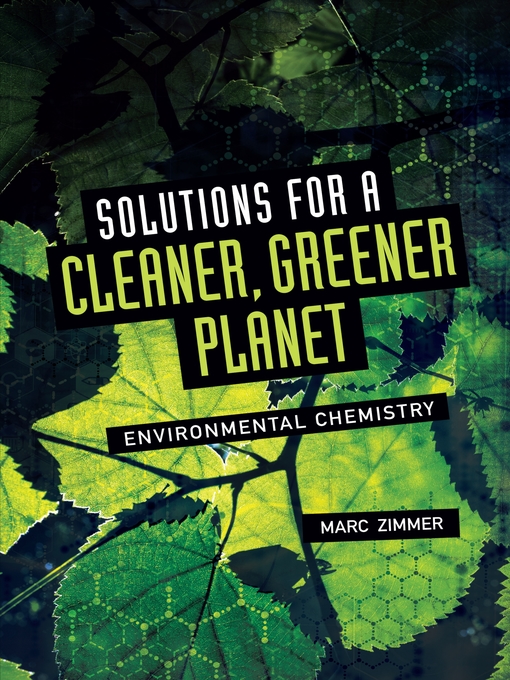-
Creators
-
Publisher
-
Release date
January 1, 2019 -
Formats
-
Kindle Book
-
OverDrive Read
- ISBN: 9781541552593
-
EPUB ebook
- ISBN: 9781541552593
- File size: 27940 KB
-
-
Languages
- English
-
Levels
- Lexile® Measure: 1090
- Text Difficulty: 7-9
-
Reviews
-
Kirkus
December 1, 2018
This is a solutions-driven survey of the greatest threats to our increasingly toxic planet.While covering just the tip of the proverbial iceberg, this overview of environmental chemistry touches on topics ranging from CO2 emissions and pesticides to nuclear fission. It at times delves into scientific details--such as the subatomic breakdown of the elements--and this information is presented in a way that is generally friendly to its intended young adult audience. Zimmer (Lighting up the Brain, 2018, etc.), a professor of chemistry, includes numerous anecdotes that make for compelling reading, for example, relating how Marie Curie's notebooks are so radioactive that to this day they have to be stored in lead-lined boxes. Included in every chapter are up-to-date events such as the environmental and human injustice of the Flint water crisis. With the litany of hazards explored, it would be easy to feel hopeless, but Zimmer ends each chapter with the heading, "What Can You Do?" These sections provide advice for achievable lifestyle changes as simple as bringing your own reusable bags to the market. Also woven throughout are viable solutions that have already been implemented, such as the Sono arsenic filtration system being used in Bangladesh. Despite the dire subject matter, this slim, amply illustrated book is engaging and even uplifting. Terrific for classroom use.Environmental chemistry that is eminently readable and hopeful. (source notes, glossary, further information, index) (Nonfiction. 12-15)COPYRIGHT(2018) Kirkus Reviews, ALL RIGHTS RESERVED.
-
The Horn Book
July 1, 2019
Zimmer explains how chemical pollutants such as heavy metals and pesticides, as well as fossil and nuclear fuels, affect human and environmental health. Case studies include prominent events like Chernobyl and the Flint water crisis. Each chapter ends with a "What You Can Do" section encouraging readers to learn more and take action. Photographs and scientific diagrams are found throughout. Reading list, websites. Bib., glos., ind.(Copyright 2019 by The Horn Book, Incorporated, Boston. All rights reserved.)
-
Formats
- Kindle Book
- OverDrive Read
- EPUB ebook
subjects
Languages
- English
Levels
- Lexile® Measure:1090
- Text Difficulty:7-9
Loading
Why is availability limited?
×Availability can change throughout the month based on the library's budget. You can still place a hold on the title, and your hold will be automatically filled as soon as the title is available again.
The Kindle Book format for this title is not supported on:
×Read-along ebook
×The OverDrive Read format of this ebook has professional narration that plays while you read in your browser. Learn more here.


